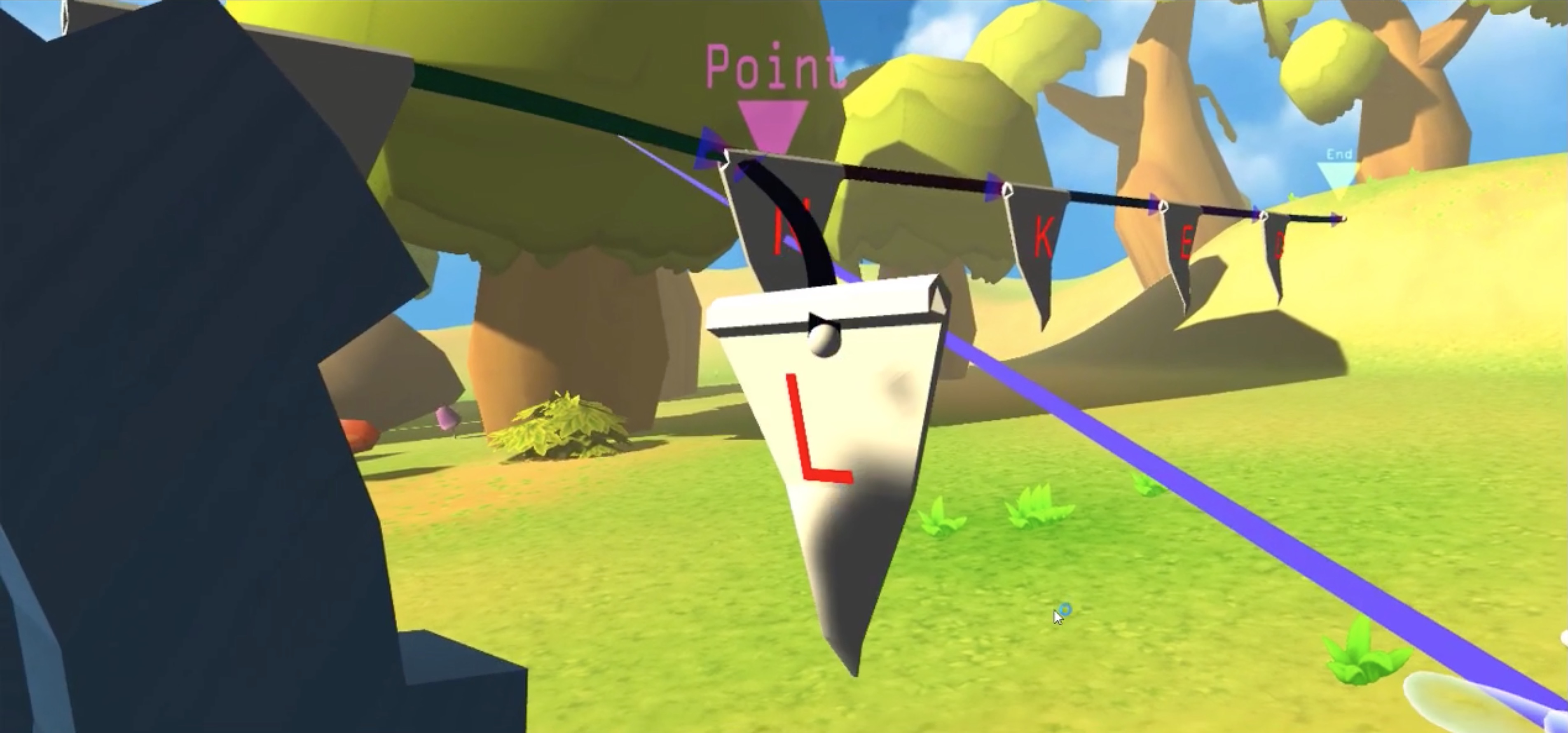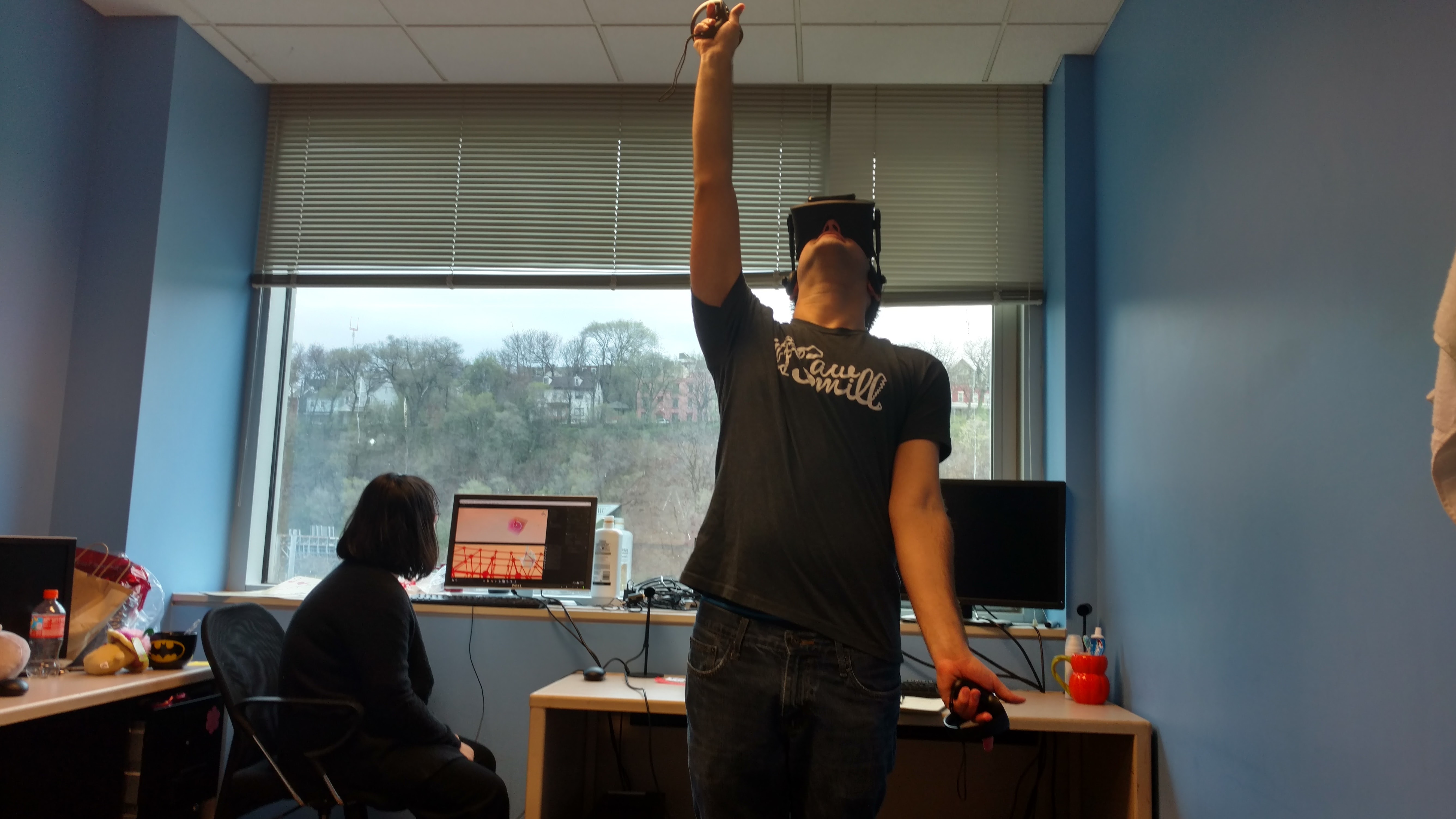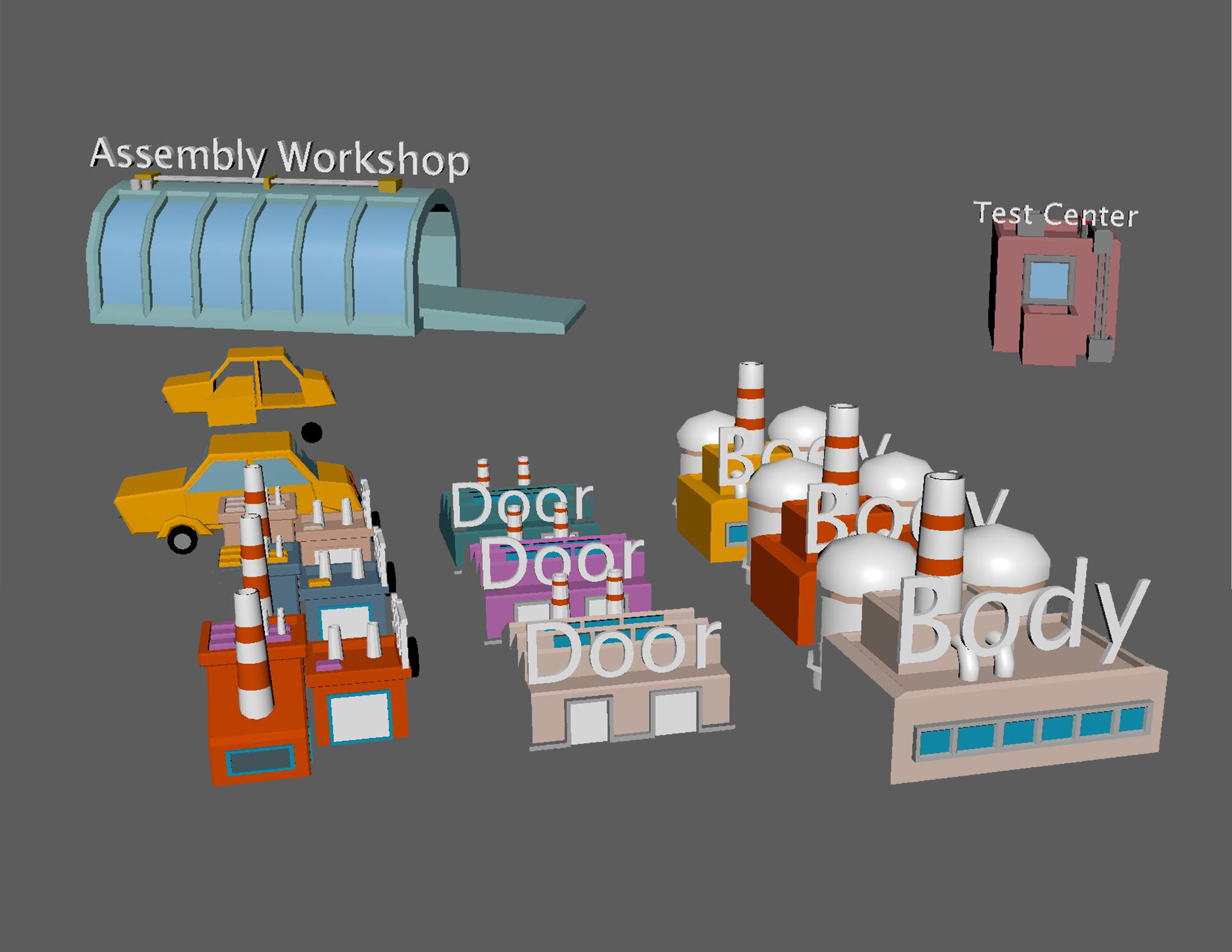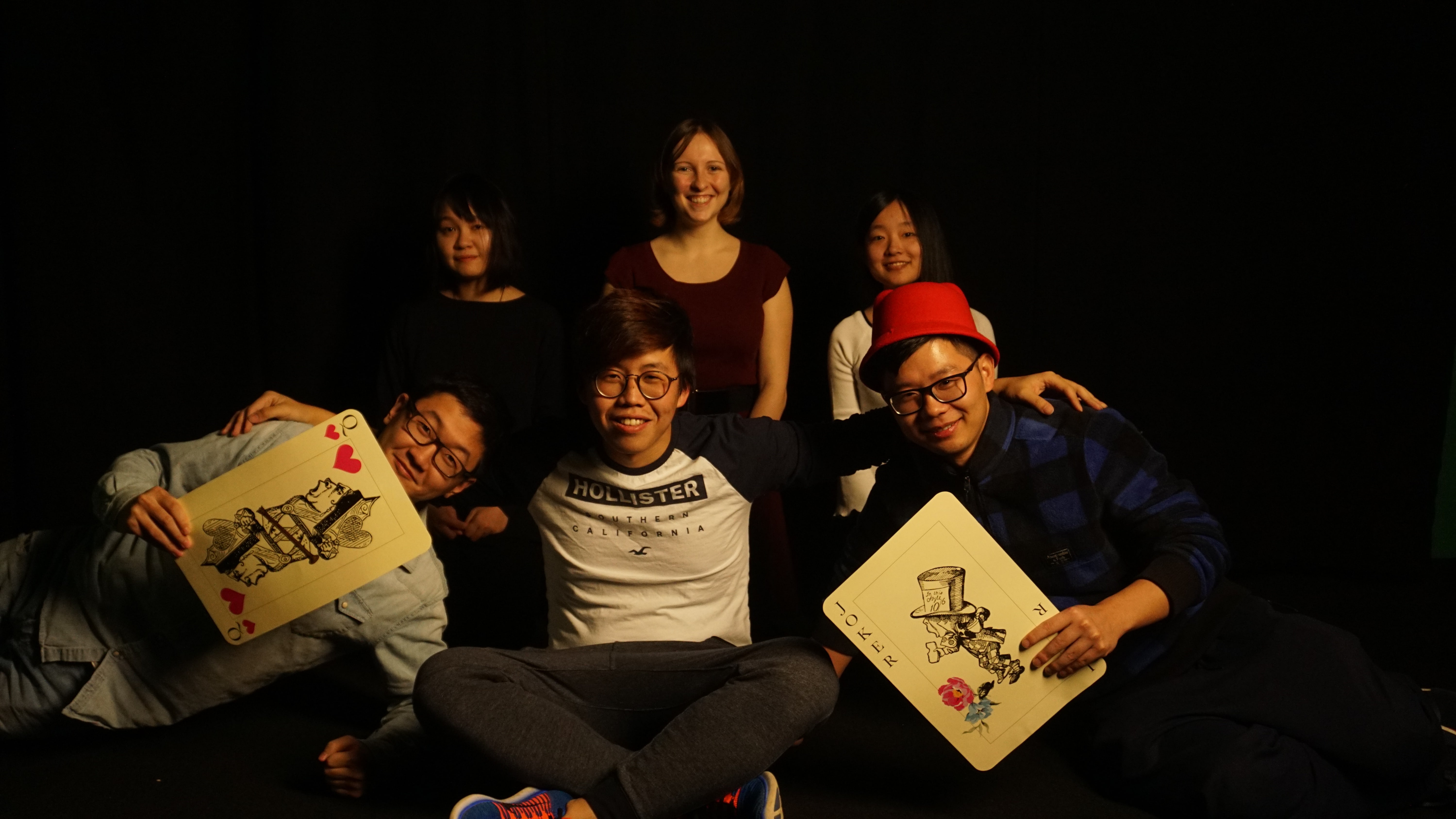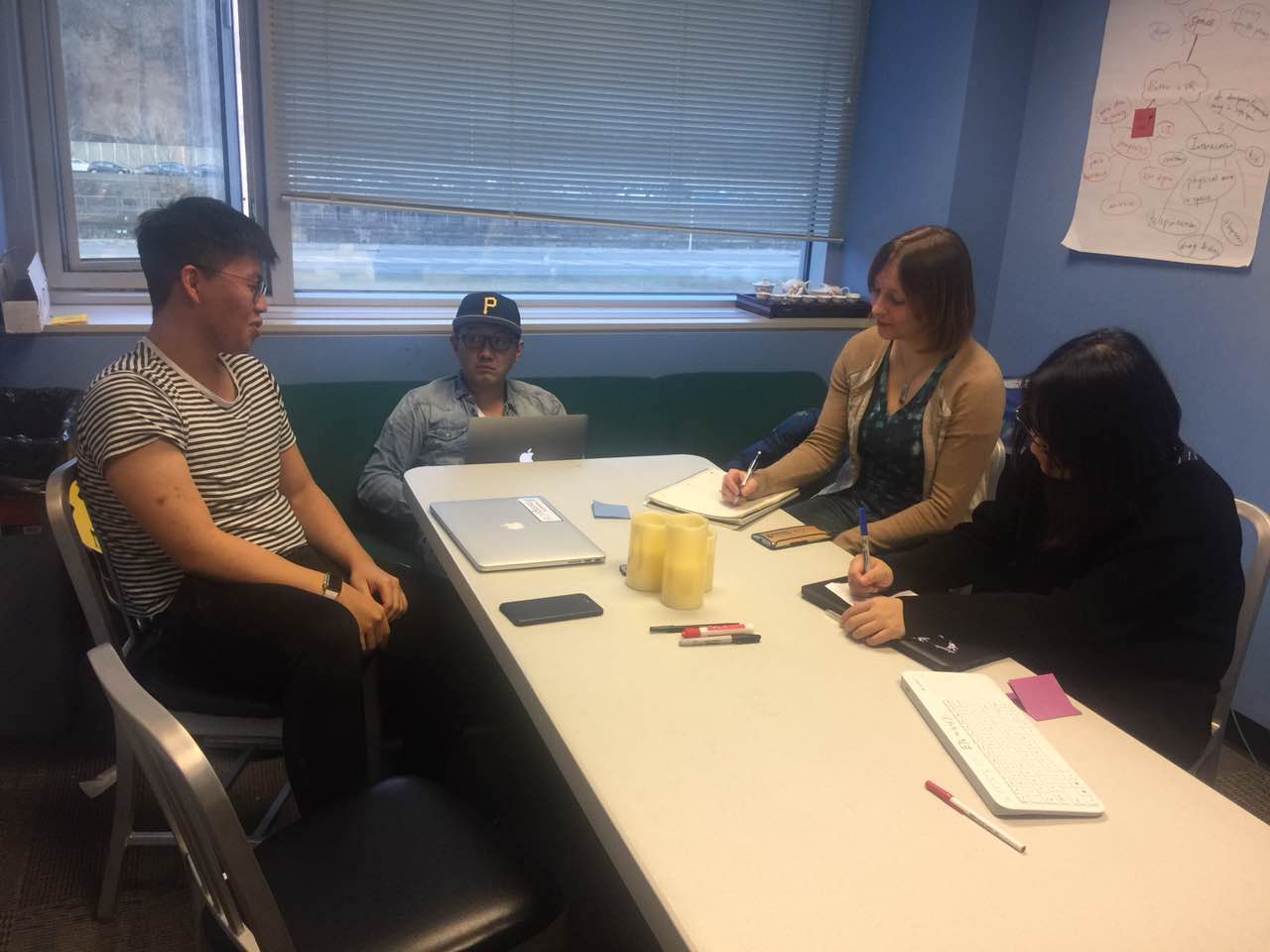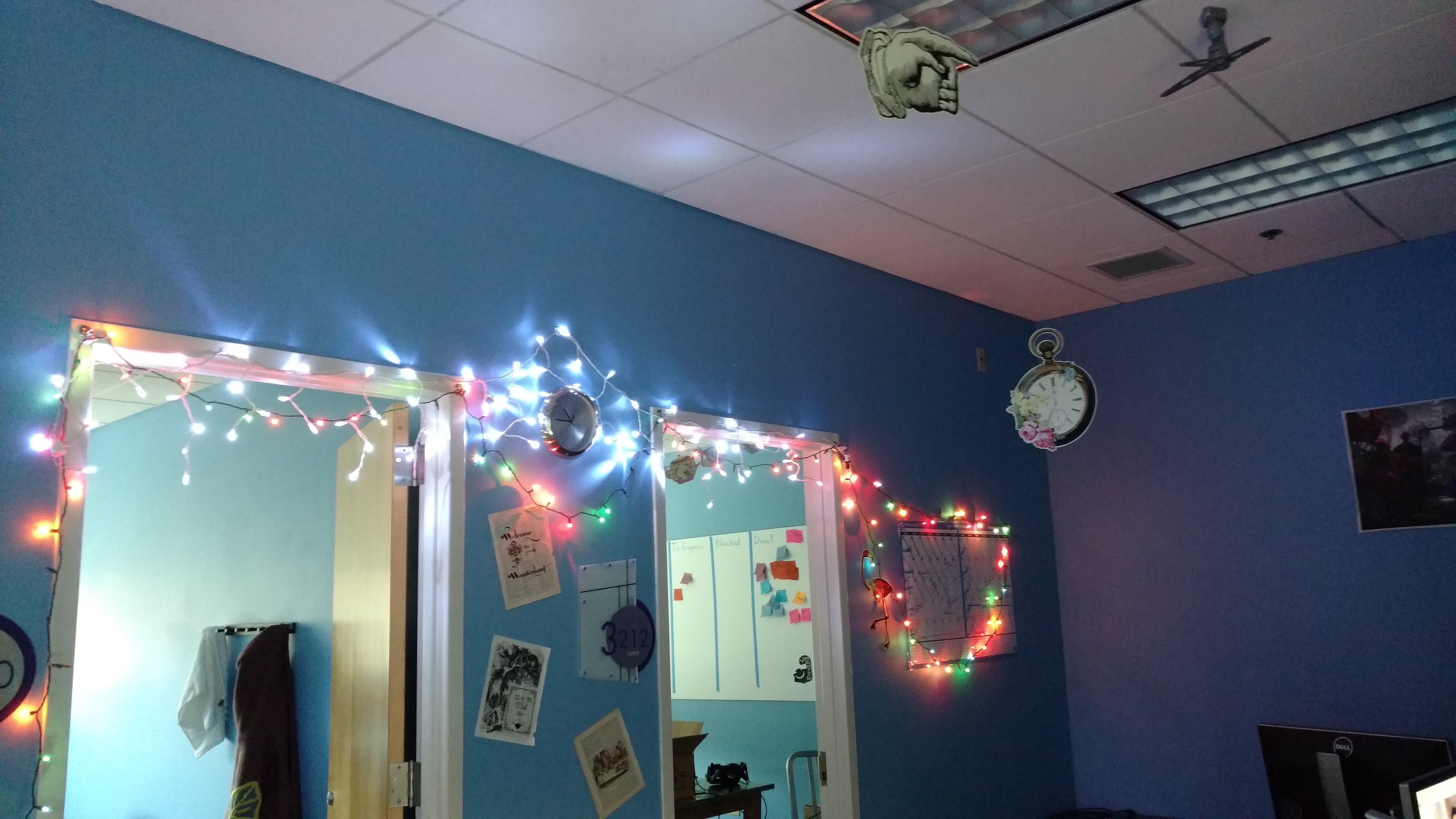This week was a four-day week, with Spring Break starting on Friday. That meant that our schedule was a bit different, especially because we are also preparing for half-semester presentations, which will take place the week we return from break. All in all, we finished up the Buggy Factory and Flying Flags prototypes, refined a couple of the ideas from our last round of pitching to pitch again when we return from break, and started planning for our half-semester presentation.
Buggy Factory
The essential interactions for this prototype were finished last week, so this week was mainly about improving the usability and making the interactions more intuitive. This meant adding visual and audio feedback for things like button presses, success, and failure. Zach focused on some new art assets like the assembly shop and test center. He and Nick also figured out how to use Unity’s rotation animation to make a conveyor belt. Nick primarily focused on making the experience more intuitive and making the code itself more adaptable. Ultimately, the appearance of the prototype is not as important as the concept, so their aim was to make sure that everything looked good enough to get the idea across without sinking a lot of time into unnecessary details.
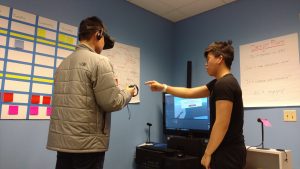
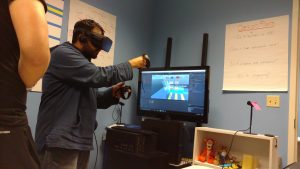 Nick also brought in a couple of our classmates for some preliminary playtesting and got some good usability feedback. There is definitely still room to make the interactions and feedback more intuitive, and we’ll have to play close attention to how we explain this one to our playtesters. However, they did ultimately understand the intended concept (modular programming), which is a good sign.
Nick also brought in a couple of our classmates for some preliminary playtesting and got some good usability feedback. There is definitely still room to make the interactions and feedback more intuitive, and we’ll have to play close attention to how we explain this one to our playtesters. However, they did ultimately understand the intended concept (modular programming), which is a good sign.
Flying Flags
The back-end structure of this one has proven to be more of a challenge than we were expecting. Since this prototype is intended to be a way to figure out and practice with linked lists, Miriam made the design decision to allow guests playing the experience to make mistakes like losing part of the banner or adding flags incorrectly. We feel that this will be more effective than a completely prescribed experience where guests are simply walked through the correct steps for inserting and deleting in a linked list. We still think that is the case, but it has provided a challenge for us in setting up and storing the resulting list (along with the physics of the banner itself). Jiawen and Luna have been working hard to get things up and running. Currently, it seems to be working but we’re still doing some debugging.
Since this prototype still has a few problems to work out on the back end, the major evaluation and playtesting will happen when we come back from spring break. We’re hoping that the interactions will be simple and intuitive enough to encourage exploration of the structure of linked lists and help guests develop a clear understanding of why the insertion and deletion algorithms work the way they do.place
Pitching
As we had a short week this week, we’ll actually be pitching to our client the Monday we get back from spring break. We had a couple of ideas that were not approved last week that we still feel have potential, so this week we focused on solving the problems with those ideas so we can pitch them again. They were:
- Running a clothes making shop to illustrate parameter passing.
- Moving along branching grape vines to demonstrate binary search trees.
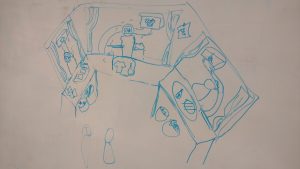
The original version of the clothing shop had the concept of combining certain kinds of information to get certain outcomes, but was missing the aspect of sending information from place to place within the program, which our survey to teachers reported as being the most difficult part of parameter passing for young students to conceptualize. To fix this, we changed the interaction from the guests putting items like fabric, patterns, and thread into a sewing machine themselves to guests giving those objects to helpful robots that take them to nearby shops and return with the result. Our hope is that this would make the concept of passing information between areas of a program more concrete for young students.
The main trouble we are having with the grape vine prototype is establishing goals and narrative that support the strict structure of a binary search tree instead of using arbitrary constraints that would make this experience more of a demonstration than a learning opportunity. We’ve been experimenting with different possibilities for this one, but it still needs some work before it will be ready to start developing.
Preparing for Halves
 The rest of our time this week was spent preparing for half-semester presentations (halves, for short). We’ll be presenting our progress and our plans for the rest of the semester to the faculty on Friday the week we get back from break. This week we created an initial outline as a team and each claimed a section to add content to. Once we had the full draft, we went over it with one of our faculty instructors and got a lot of useful feedback. We feel good about the underlying structure, so our next step is to refine how exactly we present all of the information. In particular, we started out with very factual content that does not yet show our reasoning well. In our next draft we plan to refine the content so that it does justice to our thought processes and plans. Our primary challenge in this presentation will be to explain why we expect our documentation and playtesting systems to be useful and valuable to the rest of our project.
The rest of our time this week was spent preparing for half-semester presentations (halves, for short). We’ll be presenting our progress and our plans for the rest of the semester to the faculty on Friday the week we get back from break. This week we created an initial outline as a team and each claimed a section to add content to. Once we had the full draft, we went over it with one of our faculty instructors and got a lot of useful feedback. We feel good about the underlying structure, so our next step is to refine how exactly we present all of the information. In particular, we started out with very factual content that does not yet show our reasoning well. In our next draft we plan to refine the content so that it does justice to our thought processes and plans. Our primary challenge in this presentation will be to explain why we expect our documentation and playtesting systems to be useful and valuable to the rest of our project.
With that, we’re off for spring break! For anyone regularly checking in, the next update will be two weeks from today.




